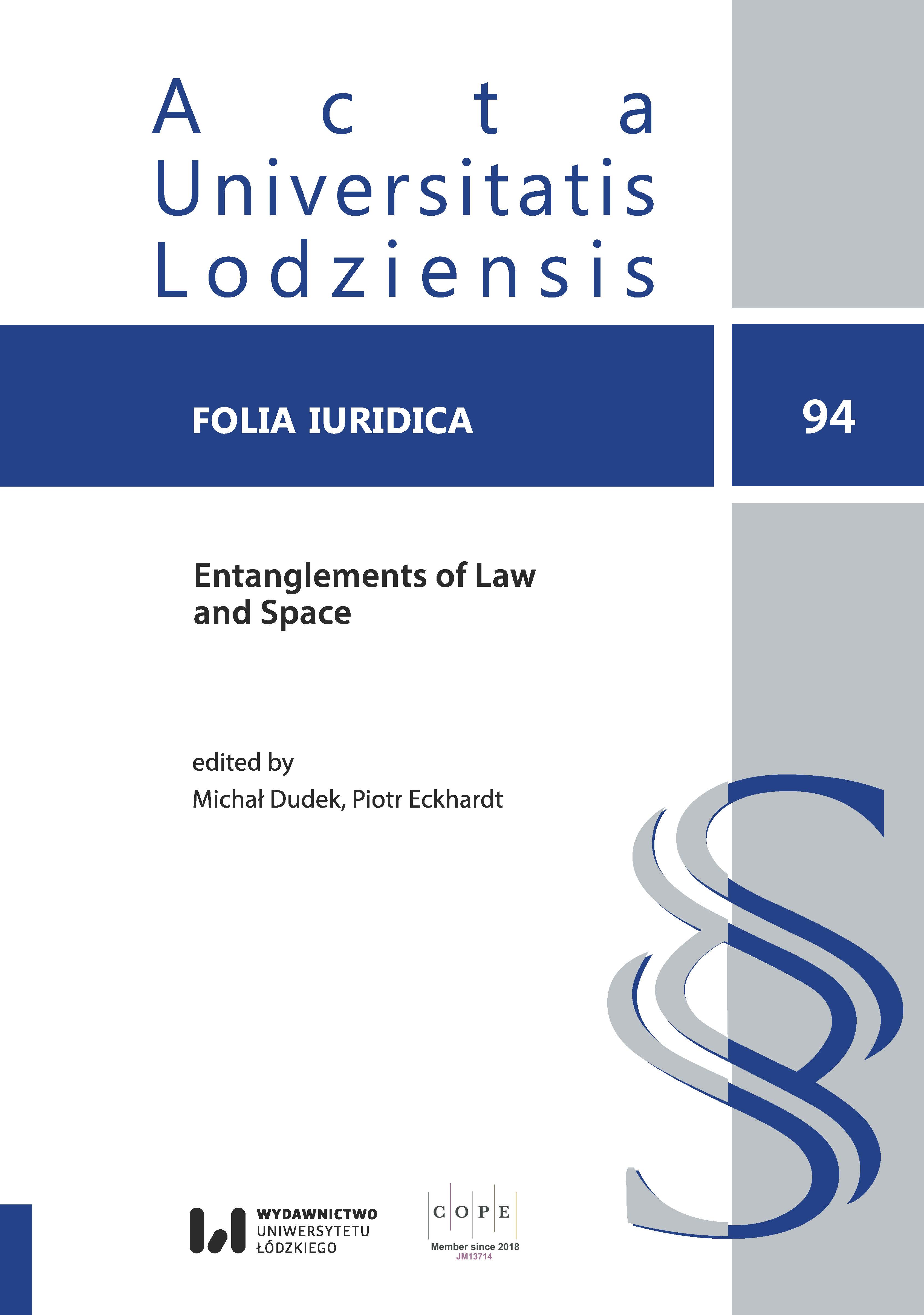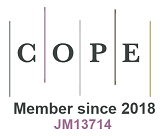Application of Cluster Analysis in Research on the Spatial Dimension of Penalised Behaviour
DOI:
https://doi.org/10.18778/0208-6069.94.06Keywords:
cluster analysis, environmental criminology, geography of crime, crime in Baltimore, computational social scienceAbstract
This paper is focused on some of the possibilities of the use of cluster analysis (clustering) in criminology and the sociology of law. Cluster analysis makes it possible to divide even a large dataset into a specified number of subsets in such a way that the resulting subsets are as homogenous as possible, and at the same time differ from each other substantially. When analysing geographical data, e.g. describing the location of crimes, the result of cluster analysis is a division of a territory into a certain number of coherent areas based on an objective criterion. The division of the territory under study into smaller parts is more insightful when the clustering method is applied compared to an arbitrary division into official administrative units.
The paper provides a detailed description of hierarchical cluster analysis methods and an example of using the Ward’s hierarchical method and the k-means combinational method to divide data on crime reports in the city of Baltimore between 2014 and 2019. The analysis demonstrates that the resulting division differs considerably from the administrative division of Baltimore, and that increasing the number of groups emerging as a result of cluster analysis leads to an increase of variance of variables describing the structure of crime in individual parts of the city. The divisions obtained using clustering are used to verify the hypothesis on differences in crime structure in different areas of Baltimore.
The main aim of the paper is to encourage the use of modern methods of data analysis in social sciences and to present the usefulness of cluster analysis in criminology and the sociology of law research.
Downloads
References
Conte, Rosaria, Nigel Gilbert, Giulia Bonelli, Claudio Cioffi-Revilla, Guillaume Deffuant, Janos Kertesz, Vittorio Loreto, Suzy Moat, Jean-Pierre Nadal, Anxo Sanchez, Andrzej Nowak, Andreas Flache, Maxi San Miguel and Dirk Helbing. 2012. “Manifesto of Computational Social Science.” The European Physical Journal Special Topics 214(1): 325–346.
Google Scholar
DOI: https://doi.org/10.1140/epjst/e2012-01697-8
Dudek, Michał, Piotr Eckhardt and Marcin Wróbel, Eds. 2018. Przestrzenny wymiar prawa [Spatial Dimension of Law]. Kraków: NOMOS.
Google Scholar
Gareth, James, Daniela Witten, Trevor Hastie and Robert Tibshirani. 2017. An Introduction to Statistical Learning with Applications in R. New York: Springer.
Google Scholar
Glyde, John. 1856. “Localities of Crime in Suffolk.” Journal of the Statistical Society of London 19(2): 102–106.
Google Scholar
DOI: https://doi.org/10.2307/2338263
Hastie, Trevor, Robert Tibshirani and Jerome Friedman. 2009. The Elements of Statistical Learning. Data Mining, Inference and Prediction Second Edition. New York: Springer.
Google Scholar
Jarocka, Marta. 2015. “Wybór formuły normalizacyjnej w analizie porównawczej obiektów wielocechowych” [“The Choice of a Formula of the Data Normalization in the Comparative Analysis of Multivariate Objects”]. Ekonomia i Zarządzanie 1: 113–126.
Google Scholar
Jonge, Erwin de and Mark van der Loo. 2013. An Introduction to Data Cleaning with R. The Hague: Statistics Netherlands.
Google Scholar
Jung, Yunjae, Haesun Park, Ding-Zhu Du and Barry Drake. 2003. “A Decision Criterion for the Optimal Number of Clusters in Hierarchical Clustering.” Journal of Global Optimization 25(1): 91–111.
Google Scholar
DOI: https://doi.org/10.1023/A:1021394316112
Kądziołka, Kinga. 2016a. “Determinanty przestępczości w Polsce. Analiza zależności z wykorzystaniem drzew regresyjnych” [“Determinants of Crime Rate in Poland. Analysis using Regression Trees”]. Ekonomia. Rynek, Gospodarka, Społeczeństwo 45: 53–81.
Google Scholar
Kądziołka, Kinga. 2016b. “Przestrzenne zróżnicowanie zagrożenia przestępczością w Polsce” [“Spatial Diversity of Crime Rate in Poland”]. De Securitate et Defensione. O Bezpieczeństwie i Obronności 2: 31–43.
Google Scholar
Krzyśko, Mirosław, Waldemar Wołyński, Tomasz Górecki and Michał Skorzybut. 2008. Systemy uczące się. Rozpoznawanie wzorców, analiza skupień i redukcja wymiarowości [Machine Learning Systems. Pattern Recognition, Cluster Analysis and Dimensionality Reduction]. Warszawa: Wydawnictwo Naukowo-Techniczne.
Google Scholar
Lazer, David, Alex Pentland, Lada Adamic, Sinan Aral, Albert Laszlo Barabasi, Devon Brewer, Nicholas Christakis, Noshir Contractor, James Fowler, Myron Gutmann, Tony Jebara, Gary King, Michael Macy, Deb Roy and Marshall Van Alstyne. 2009. “Computational Social Science.” Science 323(5915): 721–723.
Google Scholar
DOI: https://doi.org/10.1126/science.1167742
Marek, Tadeusz and Czesław Noworol. 1983. Wprowadzenie do analizy skupień [Introduction to Cluster Analysis]. Kraków: Uniwersytet Jagielloński.
Google Scholar
Matyja, Artur and Krzysztof Simiński. 2014. “Comparison of Algorithms for Clustering Incomplete Data.” Foundations of Computing and Decisions Sciences 39(2): 107–127.
Google Scholar
DOI: https://doi.org/10.2478/fcds-2014-0007
Milligan, Glenn and Martha Cooper. 1985. “An Examination of Procedures for Determining the Number of Clusters in a Data Set.” Psychometrika 50(2): 159–179.
Google Scholar
DOI: https://doi.org/10.1007/BF02294245
Mordwa, Stanisław. 2016. “The Geography of Crime in Poland and Its Interrelationship with Other Fields of Study.” Geographia Polonica 89(2): 187–202.
Google Scholar
DOI: https://doi.org/10.7163/GPol.0053
Murtagh, Fionn and Pedro Contreras. 2012. “Algorithms for Hierarchical Clustering: An Overview.” Wiley Interdisciplinary Reviews: Data Mining and Knowledge Discovery 2: 86–97.
Google Scholar
DOI: https://doi.org/10.1002/widm.53
Murtagh, Fionn and Pierre Legendre. 2014. “Ward’s Hierarchical Agglomerative Clustering Method: Which Algorithms Implement Ward’s Criterion?” Journal of Classification 31(3): 274–295.
Google Scholar
DOI: https://doi.org/10.1007/s00357-014-9161-z
Walesiak, Marek. 2002. “Pomiar podobieństwa obiektów w świetle skal pomiaru i wag zmiennych” [“Similarity Measures from the Point of View Scales of Measurement and Variables Weights”]. Prace Naukowe Akademii Ekonomicznej we Wrocławiu 950: 71–85.
Google Scholar
Walesiak, Marek. 2014. “Przegląd formuł normalizacji wartości zmiennych oraz ich własności w statystycznej analizie wielowymiarowej.” [“Data Normalization in Multivariate Data Analysis. An Overview and Properties”] Przegląd Statystyczny 61(4): 363–372.
Google Scholar
Ward, Joe. 1963. “Hierarchical Grouping to Optimize an Objective Function.” Journal of the American Statistical Association 58(301): 236–244.
Google Scholar
DOI: https://doi.org/10.1080/01621459.1963.10500845
Wierzchoń, Sławomir and Mieczysław Kłopotek. 2015. Algorytmy analizy skupień [Algorithms for Cluster Analysis]. Warszawa: Wydawnictwo WNT.
Google Scholar
Wortley, Richard and Michael Townsley. 2016. “Environmental Criminology and Crime Analysis: Situating the Theory, Analytic Approach and Application.” In Environmental Criminology and Crime Analysis, 2nd ed. 1–26. Edited by Richard Wortley and Michael Townsley. New York: Routledge.
Google Scholar
DOI: https://doi.org/10.4324/9781315709826
Zhang, Zhongheng. 2016. “Introduction to Machine Learning: K-nearest Neighbors.” Annals of Translational Medicine 4(11): 218: 1–7.
Google Scholar
DOI: https://doi.org/10.21037/atm.2016.03.37
Kowarik, Alexander and Matthias Templ. 2016. “Imputation with the R Package VIM.” Journal of Statistical Software 74(7): 1–16.
Google Scholar
DOI: https://doi.org/10.18637/jss.v074.i07
RCore Team. 2020. R: A Language and Environment for Statistical Computing. R Foundation for Statistical Computing. Vienna, Austria. Accessed 13th February 2021: https://www.R-project.org/
Google Scholar
RStudio Team. 2020. RStudio: Integrated Development for R. RStudio. PBC. Boston, MA. Accessed 13th February 2021: http://www.rstudio.com/
Google Scholar
Wickham, Hadley. 2016. ggplot2: Elegant Graphics for Data Analysis. New York: SpringerVerlag. Accessed 13th February 2021: https://ggplot2.tidyverse.org/
Google Scholar
Wickham, Hadley, Jim Hester and Romain François. 2018. readr: Read Rectangular Text Data. R package version 1.3.1. Accessed 13th February 2021: https://CRAN.R-project.org/package=readr/
Google Scholar
Wickham, Hadley, Romain François, Lionel Henry and Kirill Müller. 2020. dplyr: A Grammar of Data Manipulation. R package version 0.8.5. Accessed 13th February 2021: https://CRAN.R-project.org/package=dplyr/
Google Scholar
Downloads
Published
How to Cite
Issue
Section
License

This work is licensed under a Creative Commons Attribution-NonCommercial-NoDerivatives 4.0 International License.













